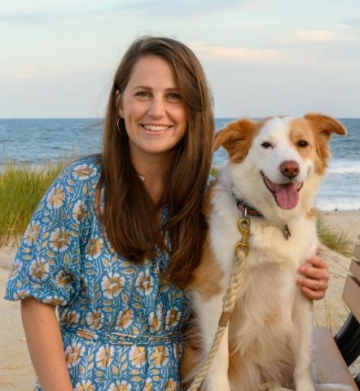Evolution and Population Dynamics of Mycobacterial Pathogens with Applications for Disease Control
Student Name:
Kristina Ceres
Student Concentration:
Population Medicine and Epidemiology
Principal Investigator:
Yrjo Grohn
Degree Conferral Date:
August 2022
Committee Member 1:
Michael Stanhope
Committee Member 2:
Martin Wells
Committee Member 3:
Brian VanderVen
Abstract:
The field of mathematical epidemiology aims to understand the distribution of diseases in populations using mathematical models. Building models involves distilling the biological facts of a disease system and using mathematical theory to describe the system dynamics. Similarly, molecular epidemiology relies on population genetic theory to link pathogen genetic data to epidemiological inference. We aimed to both understand the biological principles that drive the evolution of mycobacterial pathogens, and to determine which biological processes can be described by current theory, and which questions require new analytic approaches to fully describe.
We described a new hidden Markov model to characterize the progression of Mycobacterium avium subsp. paratuberculosis infection, the cause of Johne’s disease in ruminants through disease states. We found a minority of infected animals remain low-shedders throughout the duration of infection, whereas others progress to a high shedding disease state. Our modeling framework could be used to predict future progression patterns based on curing shedding state, which could aid in decision making on the farm.
Next, we studied the pangenome of Mycobacterium bovis, the cause of bovine tuberculosis. Recent studies suggest that M. bovis has a large accessory genome, yet there is no known mechanism for horizontal gene transfer in M. bovis. We found significant errors in accessory gene classification, correcting for errors, we show that M. bovis has a much smaller accessory genome than previously described with little gene content variation generated over outbreaks.
Finally, we studied the within-host evolution of M. bovis and employed flexible forward genetic simulation tools to simulate evolutionary processes that deviate from standard models. We found that the distribution of mutations that evolve de novo within animal hosts is random, suggesting M. bovis evolution is driven by drift at short time scales relevant to epidemiological analysis. We also found that the combined effect relatively rapid mutation rates and diversity reducing infection bottlenecks and skewed offspring distributions best describe within host evolution M. bovis. Lastly, we explored the effects of a rapid mutation rate on the evolution of antimicrobial resistance genotypes in the absence of antimicrobial use.
Publications:
Wemette M, Safi AG, Beauvais W, Ceres K, Shapiro M, Moroni P, Welcome FL, Ivanek R. New York State dairy farmers' perceptions of antibiotic use and resistance: A qualitative interview study. PLoS One. 2020 May 27;15(5):e0232937. doi: 10.1371/journal.pone.0232937. PMID: 32459799; PMCID: PMC7252592.
Ceres KM, Schukken YH, Gröhn YT. Characterizing infectious disease progression through discrete states using hidden Markov models. PLoS One. 2020 Nov 20;15(11):e0242683. doi: 10.1371/journal.pone.0242683. PMID: 33216809; PMCID: PMC7678993.
Zehr JD, Pond SLK, Martin DP, Ceres K, Whittaker GR, Millet JK, Goodman LB, Stanhope MJ. Recent Zoonotic Spillover and Tropism Shift of a Canine Coronavirus Is Associated with Relaxed Selection and Putative Loss of Function in NTD Subdomain of Spike Protein. Viruses. 2022 Apr 21;14(5):853. doi: 10.3390/v14050853. PMID: 35632597; PMCID: PMC9145938.



